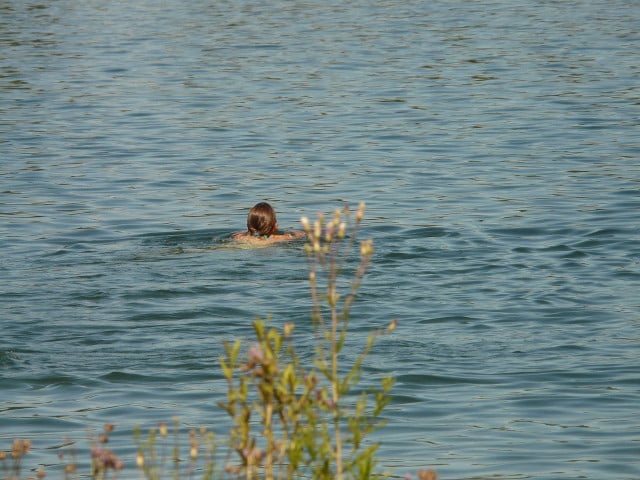
With rising temperatures, cercaria are spreading in lakes – also this year. We explain what you need to know about the parasites and give tips on what to watch out for when bathing.
Cercaria: native parasites in bathing lakes
In midsummer, visitors to bathing lakes occasionally experience skin rashes and itching. The finding is often: swimmer’s rash. The reason for this are cercariae, larvae of the fluke that live in water. They penetrate the skin of their host. With a few rules, you can minimize the risk of cercaria infestation.
Cercaria: What is it?

(Photo: CC0 / Pixabay / pixel2013)
Cercaria are the microscopic larvae of so-called flukes (trematodes) that swim around in water. Adult flukes primarily infest ducks and other waterfowl. They penetrate their skin and then lay their eggs there, which the infested animals excrete and distribute in their faeces. The freshly hatched larvae first look for freshwater snails as intermediate hosts. After the first few weeks of life, they swarm back out into the open water to search for a definitive host. It can happen that the larvae mistakenly infest humans.
Cercaria are triggers for swimmer’s dermatitis

(Photo: CC0 / Pixabay / Hans)
- An infestation of cercaria is harmless to humans, but can be unpleasant itching trigger. Unlike ducks, the larvae cannot survive in our bodies and die off quickly. Nevertheless, itching and burning can develop in the places where the larvae penetrate the skin. Spots that redden for a short time also indicate an infestation. Often, however, these harmless phenomena remain.
- Only with repeated infestation with the parasites can a swimmer’s rash develop, as the medical journal explains. Within a few hours after the infestation, wheals and pustules form on the skin, which itch very badly. These can remain on the skin for several days. The most important thing with dermatitis is to stop the urge to scratch. If you scratch the already damaged areas of skin, bacteria can penetrate and cause inflammation. So that it doesn’t get that far, you can have your dermatologist prescribe an ointment to relieve itching.
- In particularly severe but very rare cases, swimmer’s rash caused by cercariae can trigger an allergic reaction. As the medical journal describes, fever and allergic shock can occur here, for which you should see a doctor immediately.
Cercaria: This is how you minimize the risk of an infestation

(Photo: CC0 / Pixabay / Hans)
Even if cercaria are usually harmless to us humans, an infestation is annoying. During the bathing season, a few tips will help to minimize the risk of cercaria infestation:
- In general, you should take into account the main swarming times for cercariae. The parasites tend to flow more through the warmed-up bathing waters after periods of good weather, as the magazine GEO describes.
- In addition, before each visit to the lake, pay attention to official warnings or inform yourself on the website of the local health department.
- Especially on very warm days, do not stay too long in the flat shore area. Cercaria larvae and their hosts, the water snails, are particularly abundant here.
- Even very calm waters and especially small lakes can contain many cercaria. If possible, find a larger lake or choose places with a gentle current for swimming.
- Dry off immediately after each swim and change wet swimwear.
Read more on Techzle.com:
- Blue-green algae: Recognize in lakes, seas and ponds
- Bathing during pregnancy: you should pay attention to this
- Legionella: This is what you need to know about the bacteria in drinking water